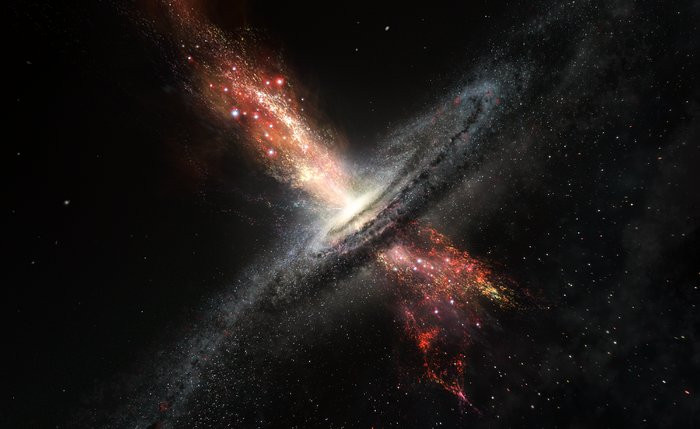Scientists observe best example of 'tidal disruption' as huge black hole gulps down star
Scientists around the world witnessed the rare phenomena last year and studied it in detail to understand supermassive black holes better.
In their latest discovery, scientists spotted rare phenomena just moments before the star meets its final fate. Known as a tidal disruption event, the researchers observed a rare blast of light from a star before it was gulped down by a massive black hole.
The rare blast was observed using telescopes from the European Southern Observatory and other places in the world, according to Eureka Alert. The enigmatic flare of energy, the closest of its kind ever recorded took place just 215 million light-years away. In astronomical terms, this distance may not be considered too big.
According to NASA, tidal disruption occurs when "observed material being blown away from a black hole after it tore a star apart." While the astronomers are yet to discover how the process begins, it is understood that the gas often falls toward black holes and spirals inward.
The phenomenon has been studied in detail by the scientists and findings of which were published in Monthly Notices of the Royal Astronomical Society.
The scientists explain that as the star "is sucked in by a black hole" it experiences what is known as spaghettification. This process is rare and believed to be hard to study.
"The idea of a black hole 'sucking in' a nearby star sounds like science fiction. But this is exactly what happens in a tidal disruption event," said Matt Nicholl, a lecturer and Royal Astronomical Society research fellow at the University of Birmingham, UK, and the lead author of the new study.
A team of researchers spotted AT2019qiz at just the right time to study the process in detail. Following this, the team of researchers carried out observations in a spiral galaxy in the constellation of Eridanus for a period of six months.
"Several sky surveys discovered emission from the new tidal disruption event very quickly after the star was ripped apart," said study author Thomas Wevers, an ESO Fellow in Santiago, Chile. "We immediately pointed a suite of ground-based and space telescopes in that direction to see how the light was produced."
"We found that, when a black hole devours a star, it can launch a powerful blast of material outwards that obstructs our view," explained Samantha Oates of the University of Birmingham. "This happens because the energy released as the black hole eats up stellar material propels the star's debris outwards."
Nicholl concluded that the observations unravelled more details about the star that was roughly the same mass as our own Sun. And it lost more than half of its mass to the black hole which is over a million times more massive.

It is believed that the study can help scientists understand big black holes better and how they impact the extreme gravity environments around them.
© Copyright IBTimes 2025. All rights reserved.





















